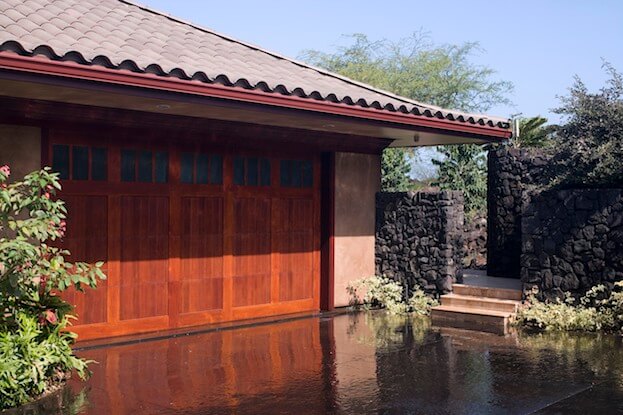How To Insulate A Garage Door
This article is reprinted from this website, for more details, please refer to this blog
The winter is not the only time homeowners should think about their home insulation. Insulation is a year-round job and that means homeowners need to make sure that their windows, vents and doors are all insulated. And when I say doors, don’t forget about the garage.
Garage doors are almost always the biggest uninsulated areas of the home. Whether you have an attached or detached garage, insulated garage doors can decrease your heating and cooling bills, provide a comfortable garage environment and prevent moisture damage. Given that garage door insulation is one of the easiest and cheapest DIY projects, there is no reason why you can’t insulate your garage door today.
Continue reading to see how you can insulate a garage door. If you don’t have one, see what it would cost to install a garage door in your area.

Attached Vs. Detached Garages
If your garage is attached to your home, then insulation is just as relevant as any other room in the home. Homeowners would be surprised at the amount of heat or cool air that could leave the home through an attached garage. The shared walls increase the strain on your HVAC system. Likewise, air that comes in through the garage has a much easier access point to the home than a detached garage.
Detached garages pose a smaller threat to your home’s insulation as it does not share, eliminate or add any strain on your heating and cooling system. On the downside, these garages won’t take any heat or air from your home, so they can get cold in the winter or hot in the summer. Fortunately, for detached garage owners, weatherstripping is usually a winning strategy for garage door insulation.
Garage Door Insulation Options
Garage door owners will have two main garage door insulation options. Of course, both are in addition to a layer of weatherstripping all homeowners should put on the bottom edge of their garage door, whether it’s attached or detached.
The first option is reflective foil insulation (pictured above). The outer materials look like foil, but the inside is usually laced with heavy-duty polyethylene. The polyethylene is usually used in rigid sheets that are placed inside the cavities of your garage door. Once placed onto the garage, the polyethylene expands to fit into place. They usually come in at 5/16th of an inch.
The other option is polystyrene panels, which look more like building blocks that fit right into the cavities. These panels may look more stylish on the inside of your garage, and most of the time, they carry a higher R-value, which measures the insulating ability.
Installing Garage Door Insulation
Most garage door insulation materials will come in a kit that you can buy from your local hardware store. They almost always include the insulating material, straight edge, tape and a utility knife.
You should start off by cleaning the inside of your garage door. Alcoholic swabs will sometimes be included in the insulation kit. Make sure you clean it thoroughly, just as you would any other area of the home.
Measure your entire length and width of your garage. Make sure you have enough insulating materials. Then, measure the length and width of each cavity on the garage door. Make sure you mark all measurements.
Take your utility knife and start cutting. If you went with composite panels, hopefully most of the cutting has been done for you, but if not, your utility knife should work just fine. For the foil, grab your two-sided tape and attach it to your insulating material. Carefully place it inside the ridges of your garage, making sure no air bubbles make their way inside. No part of the physical garage door should be showing on the inside.
For the panels, measure the ridges of your garage and then cut your panels if need be. Then, take a spray adhesive and spray the insulating material. You can add a little on the garage for good measure. Take your panel and attach it to the garage.

Garage Door Insulation Costs
As I said, this is one of the easiest and cheapest DIY projects out there. Most insulation kits can be purchased for under $100. Of course, there are always handy contractors ready to help. Be aware, this will drive up your total cost.
Conclusion
Insulation does not stop at your windows and doors. Garage doors let costly heat or cool air leave and enter your home. Garage door insulation saves energy, reduces outside noise, provides a better resistance to dents and creates a comfortable working environment inside the garage. Even more so, it’s cheap and easy. What are you waiting for?


